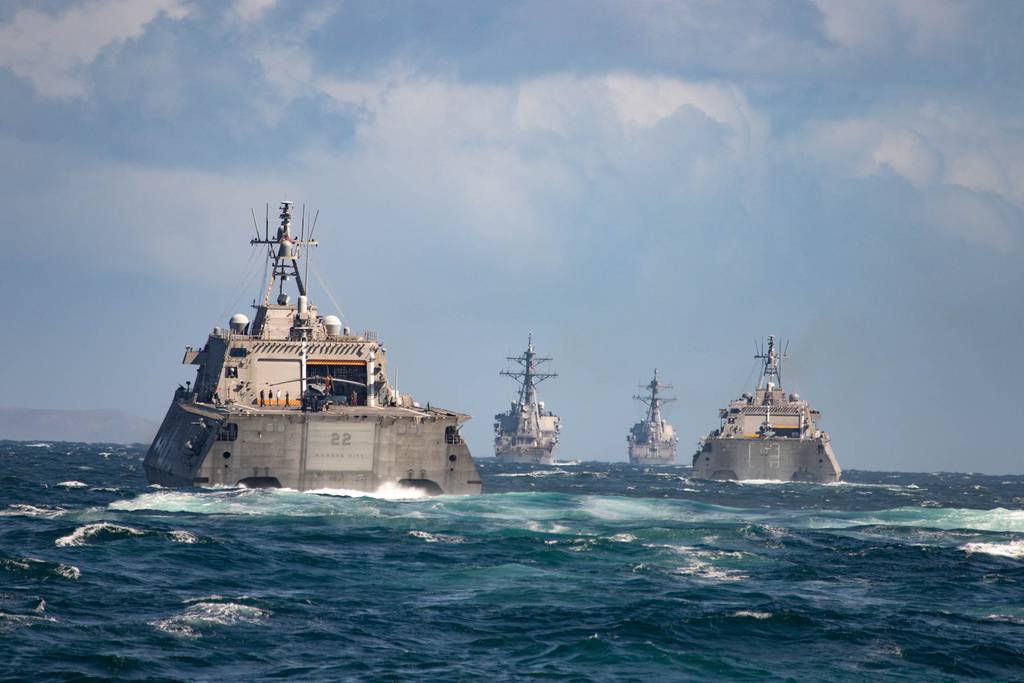
The U.S. Navy sets a fleet goal of 381 ships, up from 373, in a new long-range shipbuilding plan.
The service expects to reach this goal by 2042 if it can grow both its shipbuilding budget and the industrial base’s capacity, it says in the document.
The Navy had previously called for a fleet of 373 ships in last year’s plan, and 355 before that based on a 2016 study. The latest report calls for a modest decrease in large combatants — cruisers and destroyers — and littoral combat ships, but a significant jump in frigates: 58 in the new plan, compared 32 just last year.
The rest of the plan is largely unchanged for manned ships.
On unmanned, the fiscal 2025 long-range shipbuilding plan clarifies the requirement for unmanned craft: the Navy wants 134 total, including 78 unmanned surface vessels and 56 extra-large unmanned underwater vessels.
CLICK HERE TO READ THE FULL REPORT
The plan shows the fleet surpassing the 381-ship goal in 2042 — though that wouldn’t match the desired balance of ship types yet — before dipping into the 370s and then again reaching the required size in 2052.
But this relies on several assumptions, according to the document obtained by Defense News. USNI News first reported on the document.
“This profile assumes industry eliminates excess construction backlogs and produces future ships on time and within budget. This profile reflects growth matched to planned, but not yet achieved, industrial capacity,” the document notes. The plan also assumes the Navy will have the shipbuilding money it needs to buy the right quantities of the right ship classes.
The plan would strain the budget and shipyards’ output: whereas the Navy only asked to buy six ships in its recent FY25 budget request, that number would jump to 14 in FY27, 17 in FY31 and 18 in FY34.
The Navy releases this long-range plan each year along with its budget request. It is not binding, but rather it indicates to lawmakers and industry what direction the Navy intends to go over the next three decades.
A second, resource-constrained alternative “displays a Navy force structure reflecting a budget with no real topline growth above inflation,” though this plan assumes industry can eliminate its excess backlog and deliver ships on schedule and on budget.
In this alternative budget, where shipbuilding spending only matches inflation but is not increased, the Navy never hits its 381-ship goal. The fleet maxes out at 348 ships in FY42 and shrinks from there, due to buying between seven and 12 ships a year for most of the 2030s and 2040s.
Author: Megan Eckstein
Source: DefenseNews



